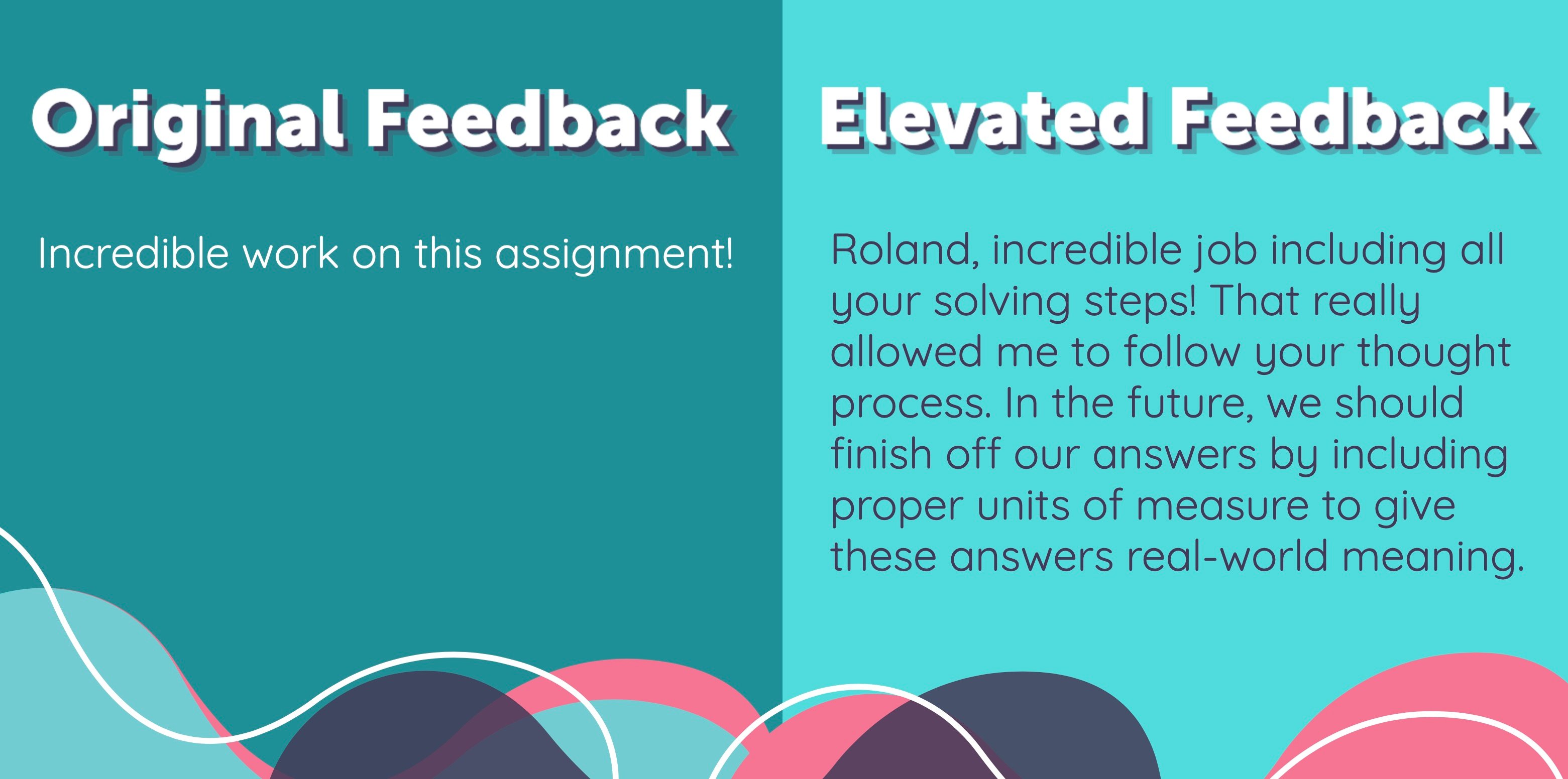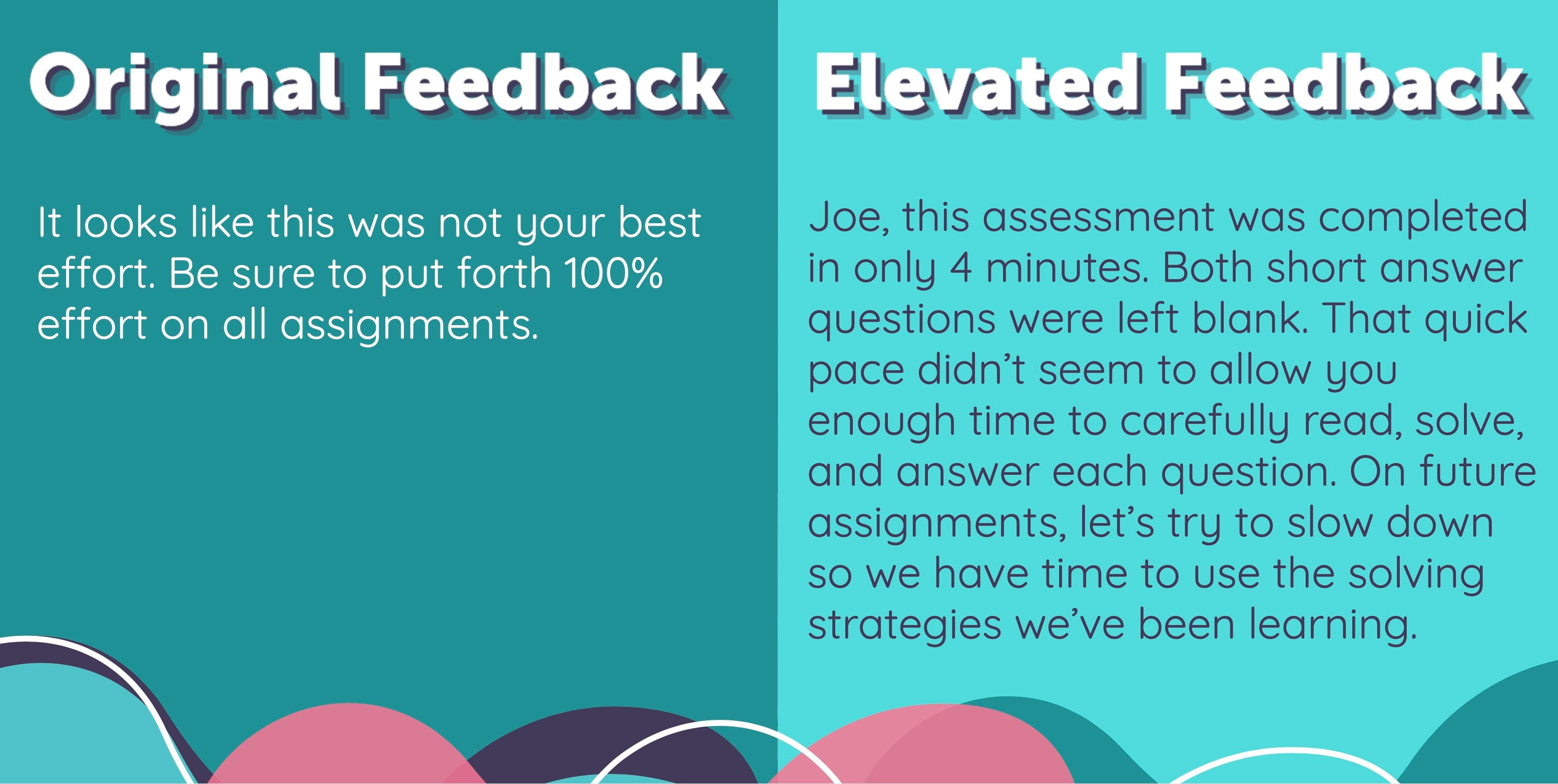Who doesn’t love a bright, colorful sticker on the top of their paper exclaiming “Great!,” “Awesome!,” or “You Rocked It!”? Although those fun stickers might make a student smile, they're not maximizing the impact we can have on student learning, because they lack depth and quality feedback.
Students might feel more confident from the praise but likely won’t understand what part they did “great” on or what was “awesome” about their work. Hmmm, I "rocked it?" they may wonder.
Providing this kind of generic feedback might even negatively affect students’ motivation. They may feel slighted when they notice that their teacher took little time or effort to read their work and provided no personalized feedback.
Quality feedback goes beyond colorful catchphrases to clearly communicate with students their growth from one assignment to another. To be meaningful, feedback should first and foremost be personalized and respectful. It should be conveyed in a timely manner, balanced, and actionable.
Take a look at some examples.
Strategy 1: Tune up your tone
- Start with a personalized greeting using the student’s name. Even weave in facts you know about the student if appropriate.
- With written feedback, the student can’t see your body language or hear inflections in your voice, so it's important that you reread your feedback to ensure you’ve achieved a respectful tone.
- Use "I" and "we" statements, rather than “you,” to give it a more collaborative feel.
- Keep the feedback balanced. In addition to mentioning areas where the student needs to improve, point out areas where the student has done well on the assignment. Even if concepts are missing, recognize the student’s effort.

Strategy 2: Don't be late
- Feedback can be used to get students on the right track, but only if it’s provided soon enough after they have submitted the work, which isn’t to say the feedback must be immediate.
- Take time to properly formulate the feedback, but don't sit on it too long.
- Clearly communicate turn-around times with students so they know when to look for feedback.
Strategy 3: Make it user-friendly
- It can be overwhelming to hear every little thing that was incorrect on an assignment. Focus on one or two key elements that will help students towards their goals.
- Feedback is a process. So, once these key things are addressed, subsequent assignment feedback can praise progress and focus on other smaller issues.

Strategy 4: Provide direction
- Be sure your feedback is actionable. Ask questions to provoke thinking.
- Be specific and constructive rather than negative.
- Actionable feedback is judgement free, conveys observed information, and includes things that can be done to improve and help students reach their goals.

Although these feedback examples aren’t bite-sized to fit on a colorful sticker, they will help students feel empowered by their strengths and motivate them to take steps towards improving areas of weakness so that they can continue to grow.
There’s also the added bonus of building a rapport with them and strengthening engagement as they get comfortable receiving feedback and asking questions. We don’t have to ditch those sheets of motivational stickers but we must put a pen on top of the stack to remind ourselves of the importance of writing personalized remarks too.
 Ryan Jackson is a mathematics teacher with Lincoln Learning Solutions. She has nearly 10 years of experience in K-12 online education. Ryan spends her free time traveling across the country with her husband and two children.
Ryan Jackson is a mathematics teacher with Lincoln Learning Solutions. She has nearly 10 years of experience in K-12 online education. Ryan spends her free time traveling across the country with her husband and two children.




 Ryan Jackson is a mathematics teacher with Lincoln Learning Solutions. She has nearly 10 years of experience in K-12 online education. Ryan spends her free time traveling across the country with her husband and two children.
Ryan Jackson is a mathematics teacher with Lincoln Learning Solutions. She has nearly 10 years of experience in K-12 online education. Ryan spends her free time traveling across the country with her husband and two children.